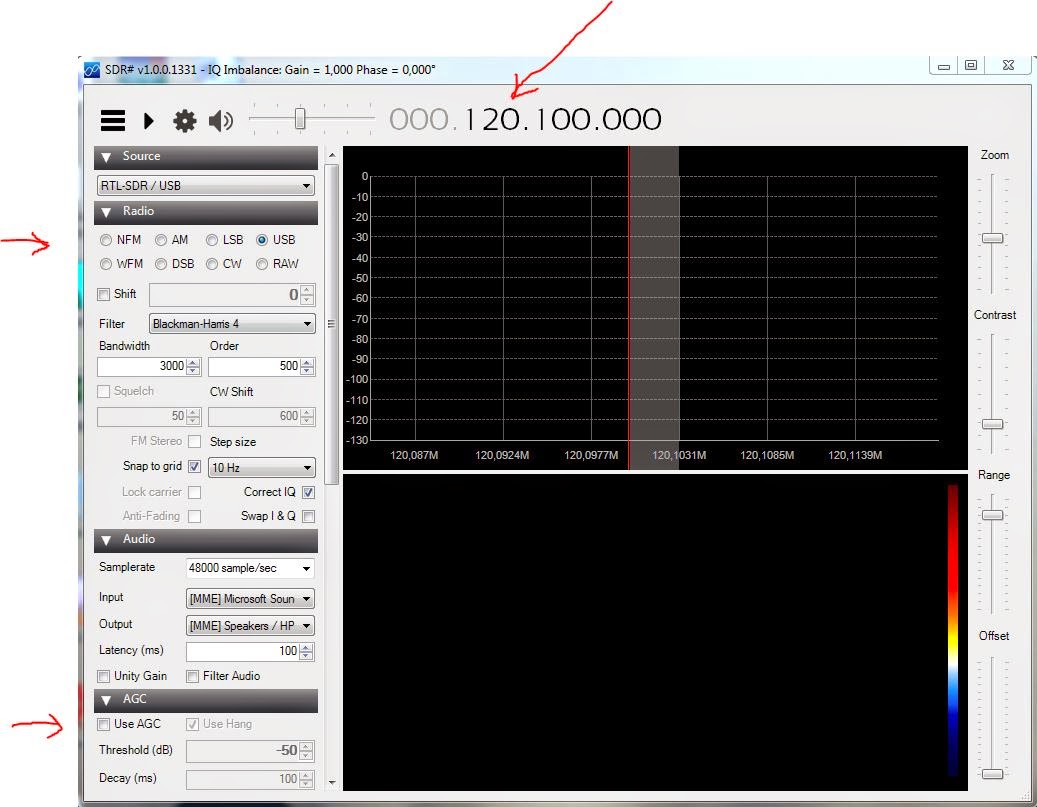With a "DVB-T" Receiver that includes a "RTL2832U" - chip combined with the wonderful freeware program "SDR-Sharp" you will own a multimode receiver for a frequency range of about 60 - 1200 MHz (!) with excellent properties.
Shortwave signals must be converted in a higher frequency for reception with the DVB-T - USB Receiver. Such a converter usualy uses the mixer-frequency of 100 MHz. For example: if you receive a signal of 15 MHz (+100 MHz), you will find the signal on your receiver-stick on 115 MHz.
The only disadvantage of the receiver is its poor selectivity of the incoming antenna signal. Therefore I recommend the use of a Bandpass Filter for the frequency range of interest.
The RF2080 C/F Calibrated Noise Source and Bandpass Filter offered by the RADIO JOVE Project will do a great job. It has the additional advantage of a calibrated noise source wich allows you to create defined reference levels.
Let's look at the most important settings:
Turn the AGC off!
After setting the receiver at work properly, connect the audio-output using a (virtual) cable with the input of the great "Radio SkyPipe" - programm:
At least connect the input of the Up-Converter with an appropriate antenna.





